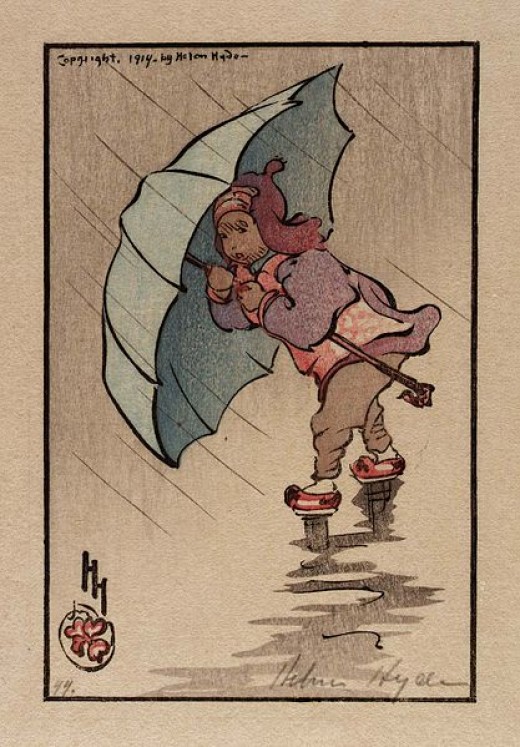 Rain and more rain this Friday morning on California’s north coast, and from all indications, this scenario will persist through the end of next week. Winds were gusting pretty-good during the night, but have way-calmed since daybreak, and it’s warm, which is a plus factor.
Rain and more rain this Friday morning on California’s north coast, and from all indications, this scenario will persist through the end of next week. Winds were gusting pretty-good during the night, but have way-calmed since daybreak, and it’s warm, which is a plus factor.
Although we really do need the water, this rainy season has been a wet mind-bender with just too many clouds and near-constant precipitation, especially with all those ‘atmospheric rivers‘ careening lately through the Pacific Northwest — no reports I’ve seen yet calls this current series an AR, but it has all the earmarks of one, near-continuous rain, warm temperatures, and seemingly never-ending.
Beyond the whining, rainy-day blues, this year has been phenomenal — yesterday, the Sierra Nevada snowpack stood at 173-percent of average, the the highest level since 1995 for this point in the year.
Supposedly, ‘“…a much brighter outlook…”‘
Our weather is apparently in line with the real ‘outlook‘ coming not-so-far down the road, which by all accords is not so bright. These ARs are fueled by heat and moisture from the tropics near Hawaii, and even further west into the Pacific.
Climate change is weirding out the weather, and weirdly, warmth is flowing from the north.
From MSN yesterday:
The Arctic is so warm and has been this warm for so long that scientists are struggling to explain it and are in disbelief.
The climate of the Arctic is known to oscillate wildly, but scientists say this warmth is so extreme that humans surely have their hands in it and may well be changing how it operates.
Temperatures are far warmer than ever observed in modern records, and sea ice extent keeps setting record lows.
…
Veteran Arctic climate scientists are stunned.
“[A]fter studying the Arctic and its climate for three and a half decades, I have concluded that what has happened over the last year goes beyond even the extreme,” wrote Mark Serreze, director of the National Snow and Ice Data Center in Boulder, Colo., in an essay for Earth magazine.
At the North Pole, the mercury has rocketed to near the melting point twice since November, and another huge flux of warmth is projected by models next week.
Their simulations predict some places in the high Arctic will rise over 50 degrees above normal.
And we keep getting the rainy-day sad — also yesterday was Groundhog Day, and climate change, too, is morphing all kinds of shit.
Via Gizmodo:
This year, Punxsutawney Phil saw his shadow.
The superstition goes if the groundhog sees its shadow, then there’ll be six more weeks of winter, and if not, we’re treated to an early spring.
Phil is no better at predicting the weather than a coin flip.
But we wanted to know how the little dude’s predicting abilities (and his fate), would change if we threw climate change into the mix.
“We have forecasts and outlooks that go out to about one year and [climate] projections that are averages around 10, 20, 30 years. The trend in the eastern United States is towards warmer and wetter,” Elizabeth Becker, Research Scientist at the National Oceanic and Atmospheric Administration’s Climate Prediction Center, told Gizmodo.
As a reminder: “Weather” is what Phil experiences day-to-day. “Climate” is the long-term trend over time.
…
But at least one scientist told us that we should probably be worrying about the groundhog’s health with a changing climate, too.
Groundhogs hibernate, meaning that after they eat a whole lot to fatten up, they spend much of the year sleeping, explained Roelof Hut, assistant professor at the University of Groningen in the Netherlands.
Hibernating species usually experience a period of deep sleep, waking up every few weeks.
The groundhogs expend almost all of their fat reserves during these so-called arousal periods.
Climate change could mean more arousals, and quicker depletion of the groundhog’s fat.
“At a certain point when they go really skinny they may die in hibernation,” said Hut.
“Alternatively, they may decide to emerge early from hibernations. But they’ll emerge skinnier anyway, or die because they’re so skinny.”
Meanwhile, I feel a natural desire for a listen to The Cure…
(Illustration above: ‘The Blue Umbrella 1914,’ by Helen Hyde, found here).